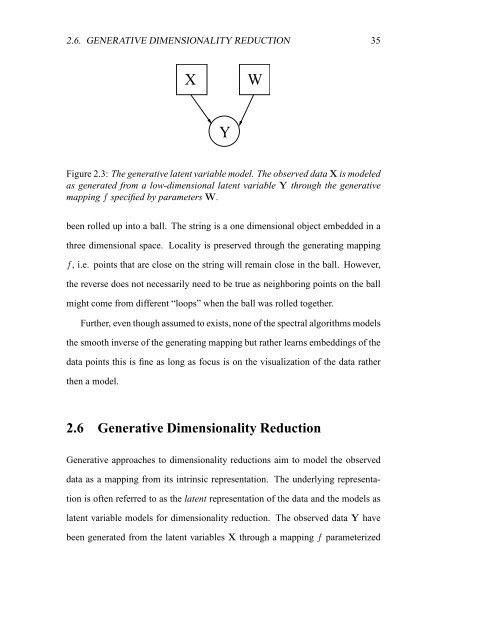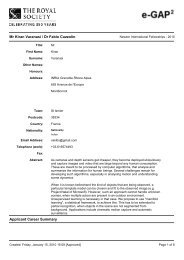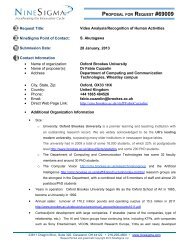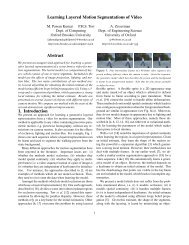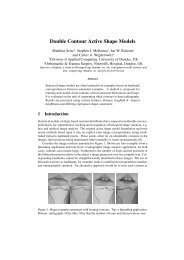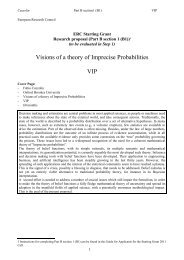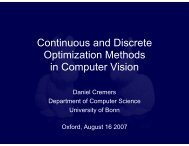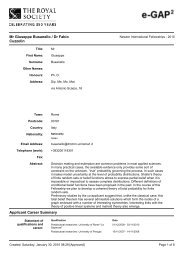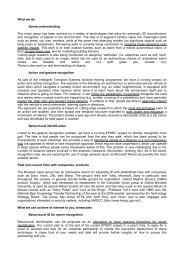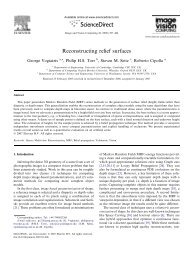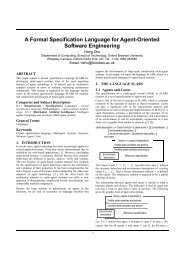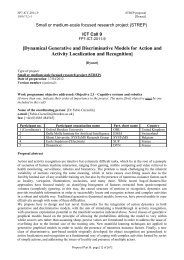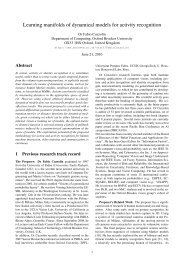Shared Gaussian Process Latent Variables Models - Oxford Brookes ...
Shared Gaussian Process Latent Variables Models - Oxford Brookes ...
Shared Gaussian Process Latent Variables Models - Oxford Brookes ...
Create successful ePaper yourself
Turn your PDF publications into a flip-book with our unique Google optimized e-Paper software.
2.6. GENERATIVE DIMENSIONALITY REDUCTION 35<br />
X<br />
Y<br />
Figure 2.3: The generative latent variable model. The observed data X is modeled<br />
as generated from a low-dimensional latent variable Y through the generative<br />
mapping f specified by parameters W.<br />
been rolled up into a ball. The string is a one dimensional object embedded in a<br />
three dimensional space. Locality is preserved through the generating mapping<br />
f, i.e. points that are close on the string will remain close in the ball. However,<br />
the reverse does not necessarily need to be true as neighboring points on the ball<br />
W<br />
might come from different “loops” when the ball was rolled together.<br />
Further, even though assumed to exists, none of the spectral algorithms models<br />
the smooth inverse of the generating mapping but rather learns embeddings of the<br />
data points this is fine as long as focus is on the visualization of the data rather<br />
then a model.<br />
2.6 Generative Dimensionality Reduction<br />
Generative approaches to dimensionality reductions aim to model the observed<br />
data as a mapping from its intrinsic representation. The underlying representa-<br />
tion is often referred to as the latent representation of the data and the models as<br />
latent variable models for dimensionality reduction. The observed data Y have<br />
been generated from the latent variables X through a mapping f parameterized


